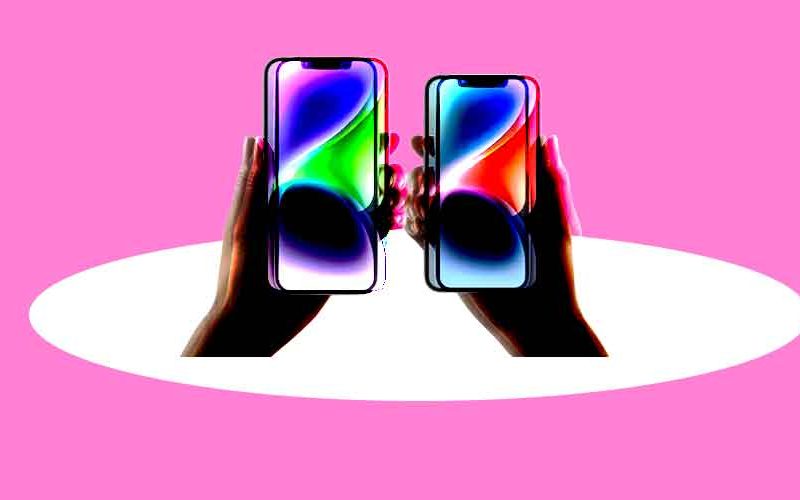The prices of the iPhone continue to remain high despite its manufacturing units in India
Apple, the world’s most valuable company, is known for its premium and innovative products, especially its flagship iPhone series. However, Apple is notorious for its high and often unjustified prices, especially in emerging markets like India. The latest example is the iPhone 15, which is set to launch in India next week, with significantly higher prices than in the US and other countries despite being locally assembled.
The iPhone 15 is the newest model of Apple’s smartphone, which was unveiled on September 12, 2023. It features a 6.1-inch OLED display, a new A16 Bionic chip, a 12-megapixel dual-camera system, a 12-megapixel selfie camera, a 3,240 mAh battery, and a USB-C port. It also supports 5G connectivity, wireless charging, Face ID, and water resistance. The iPhone 15 comes in four colors: black, white, blue, and pink.
The iPhone 15 is priced at $799 in the US for the base model with 64 GB of storage. However, in India, the same model will cost Rs79,900 ($965), more than 20% higher than the US price. The higher-end models with more storage and features are even more expensive in India. For instance, the iPhone 15 Pro with a 6.7-inch display, a triple-camera system, and a LiDAR scanner costs $1,199 in the US for the base model with 128 GB of storage. But in India, it will cost Rs1,59,900 ($1,930), more than 60% higher than the US price.
Local Assembly Efforts
Apple has made significant strides in recent years to diversify its supply chain and reduce its reliance on manufacturing in China. This shift was strategic and an attempt to mitigate the impact of ongoing trade tensions and supply chain disruptions. As part of these efforts, Apple started assembling some of its devices, including the iPhone, in countries other than China, aiming to cut costs and offer more competitive prices.
Apple invested in local assembly facilities in India, one of the largest smartphone markets globally. The idea was to take advantage of India’s low-cost labor and reduce import duties, making iPhones more affordable for the Indian consumer. However, despite these moves towards local assembly, the iPhone 15’s prices have reached unprecedented levels.
Soaring Price Tag
The iPhone 15 lineup, comprising various models with different specifications, boasts cutting-edge technology, impressive cameras, and the latest software. However, these enhancements come at a steep price. The base model of the iPhone 15 is considerably more expensive than its predecessor, the iPhone 14, which was already considered a premium device.
One of the key factors contributing to the price hike is the rising cost of raw materials, particularly semiconductor chips. Global chip shortages have increased production costs for Apple and other smartphone manufacturers. Despite local assembly efforts, the dependence on imported components still plays a significant role in determining the final cost of the device. These supply chain disruptions have forced Apple to pass on some of these increased costs to consumers.
Additionally, incorporating advanced technologies, such as improved OLED displays, 5G capabilities, and enhanced camera systems, has increased production expenses. While Apple continues to invest in research and development, it ultimately falls on the consumer to shoulder these expenses through higher retail prices.
The Luxury Brand Image
One could argue that Apple’s pricing strategy is not solely driven by production costs but also by its desire to maintain its luxury brand image. Apple has cultivated a reputation for providing premium products that signify status and exclusivity. The company’s loyal customer base is often willing to pay a premium for the Apple experience, irrespective of local assembly efforts or production costs.
By setting the iPhone 15 at a higher price point, Apple reinforces its status as a luxury brand. This strategy is further accentuated by introducing exclusive features and finishes for higher-tier models, enticing consumers to opt for the more expensive variants.
Conclusion
Despite Apple’s efforts to shift some production to local assembly in countries like India and diversify its supply chain, the iPhone 15’s prices have reached unprecedented levels. Rising production costs, global chip shortages, and Apple’s commitment to maintaining a luxury brand image have all contributed to this price hike.
While the iPhone 15 undoubtedly offers cutting-edge technology and features, its exorbitant price tag raises questions about accessibility and affordability. As Apple continues to push the boundaries of innovation, consumers may find themselves increasingly priced out of the premium smartphone market, potentially opening doors for more budget-friendly competitors to gain market share.
Ultimately, the iPhone 15’s pricing strategy underscores the delicate balance between innovation, brand image, and consumer affordability in the ever-evolving world of technology. Whether or not consumers are willing to pay the premium for the latest Apple device remains to be seen. Still, one thing is clear: the iPhone 15 is a testament to Apple’s ability to set the bar high in terms of technology and pricing.







